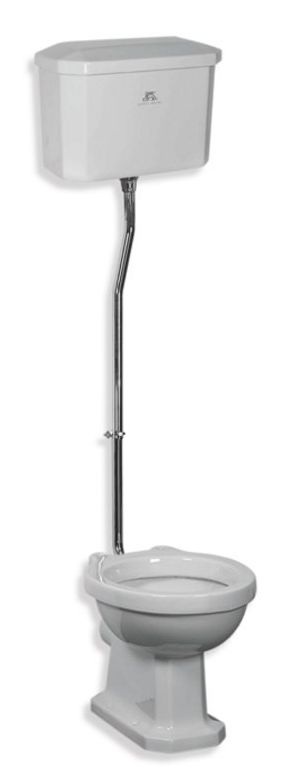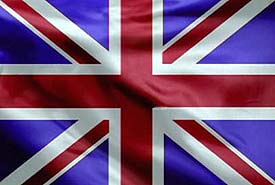
Flushing Toilet
Contents Flushing Toilet Sir John Harrington 1596 JF Brondel 1738 Alexander Cumming 1775 Samuel Prosser 1777 Joseph Bramah 1778 Josiah George Jennings 1852 Thomas Twyford 1870 Thomas Crapper 1880
Where would be without that little room with that pan 'to go on'. That room of 'relief'. Thanks to these guys you can now take comfort that your needs are taken care of.
The technical challenges in flush toilets were the flush mechanism and a method of prevent smells passing from the drain. Overcoming these challenges has taken hundreds of years.
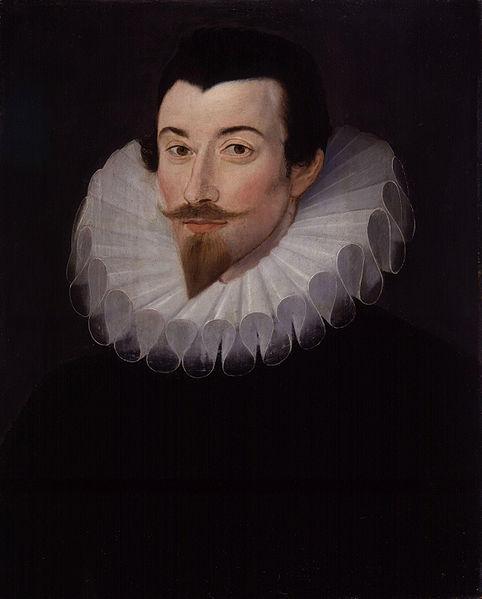 | |
| Born | 4 August 1561 Kelston |
|---|---|
| Died | 20 November 1612 | Age 51 Kelston |
Sir John Harrington 1596
The first flush toilet or water-closet was invented by Sir John Harrington in 1596. He was the godson to Queen Elizabeth I of England. Harrington invented both a valve at the bottom of the water tank, and a wash-down system. However it was not widely adopted because there was no supply of running water to flush it.
JF Brondel 1738
In 1738, JF Brondel introduced the valve type flush toilet.
Alexander Cumming 1775
Alexander Cumming improved the Brondel valve. Cumming was a watchmaker and mechanician from Edinburgh (1732-1814). He invented the 'S'-shaped trap in 1775 and was the first to patent the flushing water closet. It used standing water to seal the outlet of the bowl, preventing the escape of foul air from the sewer, and used a sliding valve.
Samuel Prosser 1777
In 1777, Samuel Prosser invented and patented the 'plunger closet'. The plunger released the waste and also sealed the soil pipe.
Joseph Bramah 1778
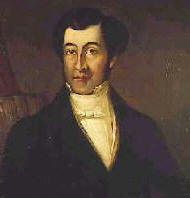
(1748 - December 9, 1814), born Stainborough, Yorkshire, England. Joseph Bramah invented a hinged valve or 'crank valve' in 1778. This sealed the bottom of the bowl. He also devised a float valve system for the cistern. Early toilet bowls were painted cast iron and had no flange on the rim. These discharged into a separate chamber and then into the cess-pit or sewer. The metal rusted and the seals between the components leaked. Because the valve was unreliable, there had to be an overflow. Although the parts were in a wooden case, the toilet did smell. The 'U-bend', or the water-sealed trap, was invented in 1782. This could replace the outlet valve. Because it could not jam, it did not need an overflow.
Josiah George Jennings 1852
Born on 10 November 1810 in Eling, England. In 1852, Jennings invented the wash-out design with a shallow pan emptying into an S-trap. He popularised public lavatories or 'Retiring Rooms' by installing the first flushing public toilets in the Crystal Palace for the Great Exhibition of 1851; over 827,000 people paid attendants one penny to use the 'Wash-rooms'. His installation went on to produce a revenue of £1000 a year. Jennings was awarded a gold medal for this pioneering and essential work, when by the 1890s he had enriched public thoroughfares all over Britain. His firm's catalogue of 1895 listed 36 towns and 'many others' where these public conveniences were installed, including Paris, Florence, Berlin, Madrid, and Sydney as well as in South America and the Far East. He also supplied water closets to 30 railway companies in Britain, America, and others in Buenos Aires, Cape Town and Mexico.
Thomas Twyford 1870
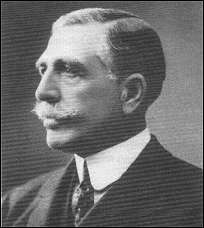
Thomas William Twyford (1849-1921)born in Hanover Street, Hanley, Stoke-on-Trent, was a Pottery manufacturer in England. By 1870, Thomas Twyford's improved version of the Bramah contained no metal parts, and in 1885 he created the one-piece 'wash-out' toilet, called the 'Unitas'. This used a 'P'-shaped trap. In 1885, he created the first valveless toilet made of china. Other makers at this stage included Josiah Wedgwood, Thomas Crapper and John Shanks.
Thomas Crapper 1880
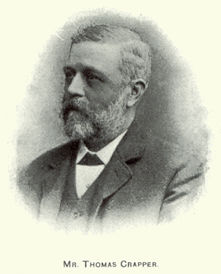
Born 1836 Waterside, Yorkshire, England. During the 1880s Thomas Crapper invented the siphonic system for emptying the cistern. This avoided the problem of leaks common with the earlier floating valve system. Apparently the term to 'have a crap' existed before Mr Crapper's contribution to the Flush Toilet.
